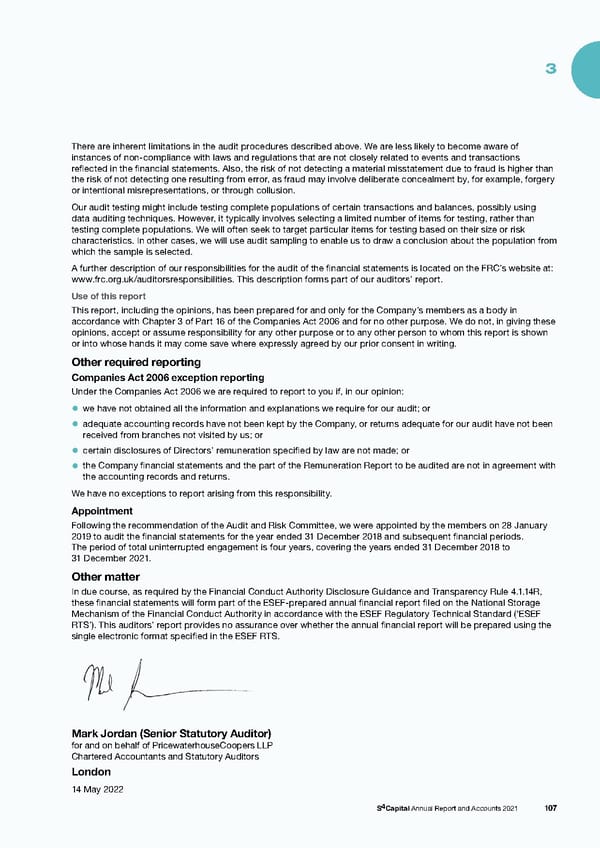3 There are inherent limitations in the audit procedures described above. We are less likely to become aware of instances of non-compliance with laws and regulations that are not closely related to events and transactions reflected in the financial statements. Also, the risk of not detecting a material misstatement due to fraud is higher than the risk of not detecting one resulting from error, as fraud may involve deliberate concealment by, for example, forgery or intentional misrepresentations, or through collusion. Our audit testing might include testing complete populations of certain transactions and balances, possibly using data auditing techniques. However, it typically involves selecting a limited number of items for testing, rather than testing complete populations. We will often seek to target particular items for testing based on their size or risk characteristics. In other cases, we will use audit sampling to enable us to draw a conclusion about the population from which the sample is selected. A further description of our responsibilities for the audit of the financial statements is located on the FRC’s website at: www.frc.org.uk/auditorsresponsibilities. This description forms part of our auditors’ report. Use of this report This report, including the opinions, has been prepared for and only for the Company’s members as a body in accordance with Chapter 3 of Part 16 of the Companies Act 2006 and for no other purpose. We do not, in giving these opinions, accept or assume responsibility for any other purpose or to any other person to whom this report is shown or into whose hands it may come save where expressly agreed by our prior consent in writing. Other required reporting Companies Act 2006 exception reporting Under the Companies Act 2006 we are required to report to you if, in our opinion: • we have not obtained all the information and explanations we require for our audit; or • adequate accounting records have not been kept by the Company, or returns adequate for our audit have not been received from branches not visited by us; or • certain disclosures of Directors’ remuneration specified by law are not made; or • the Company financial statements and the part of the Remuneration Report to be audited are not in agreement with the accounting records and returns. We have no exceptions to report arising from this responsibility. Appointment Following the recommendation of the Audit and Risk Committee, we were appointed by the members on 28 January 2019 to audit the financial statements for the year ended 31 December 2018 and subsequent financial periods. The period of total uninterrupted engagement is four years, covering the years ended 31 December 2018 to 31 December 2021. Other matter In due course, as required by the Financial Conduct Authority Disclosure Guidance and Transparency Rule 4.1.14R, these financial statements will form part of the ESEF-prepared annual financial report filed on the National Storage Mechanism of the Financial Conduct Authority in accordance with the ESEF Regulatory Technical Standard (‘ESEF RTS’). This auditors’ report provides no assurance over whether the annual financial report will be prepared using the single electronic format specified in the ESEF RTS. Mark Jordan (Senior Statutory Auditor) for and on behalf of PricewaterhouseCoopers LLP Chartered Accountants and Statutory Auditors London 14 May 2022 S4Capital Annual Report and Accounts 2021 107
 s4 capital annual report and accounts 2021 Page 108 Page 110
s4 capital annual report and accounts 2021 Page 108 Page 110